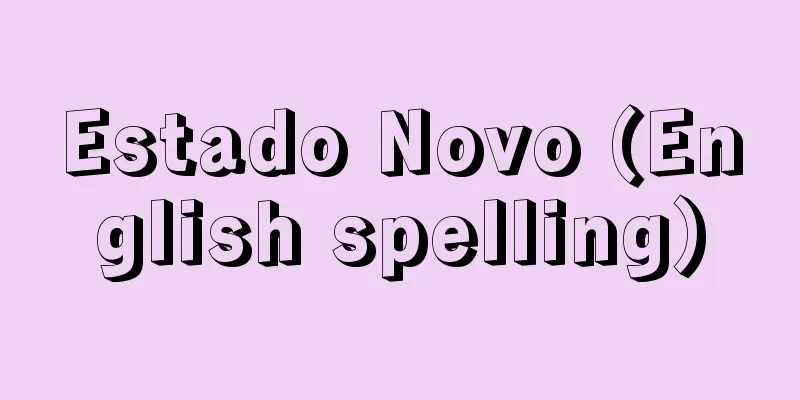Tense - Jisei

|
A grammatical category. Also known as tense in English. A means of linking the content of a sentence to a place in time. Depending on the language, this can be indicated by a verb inflection or by another word form that is linked to the verb, such as an auxiliary verb. The time that a tense refers to is usually divided into three parts: the present time centered on the time of utterance, the past time before that, and the future time after that. The present time, which is the reference, can be stretched from an instant to a considerable length of time, and cannot be physically determined. It refers to various temporal situations depending on the combination of the context and the nature of the meaning of the verb (momentary verb, stative verb, etc.). Even if a language distinguishes between three tenses, it does not necessarily show a one-to-one connection with the three time periods in actual usage. There are "historical present" in which the present tense describes past events, and "unrealistic usage" in which the past tense means assumptions about the present time. In general, the present tense is used to refer to general truths or the process of things that are not directly related to time, so it is not thought to actively refer to the present time. When analyzing individual languages, there are cases where there is no consensus on whether or not tense is recognized, such as in Japanese. In other words, there is a theory that aspects are indicated instead of tense, with the ru form indicating the imperfect and the ta form indicating the perfect. In English, tense is recognized, and there are past tense and non-past tense, but there is no consensus on whether or not future tense is recognized. There are also languages that can be said to have no clear tense, such as the Beijing dialect of Chinese. In actual usage, several forms are combined to express precise time. Shita tokoro da expresses the near past, shiteiru tokoro da expresses the present progressive, and surutokoro da expresses the near future. In addition, the present tense or imperfective aspect of suru can also carry a "mood" meaning of the speaker's will. [Tetsuya Kunihiro] Source: Shogakukan Encyclopedia Nipponica About Encyclopedia Nipponica Information | Legend |
|
文法的カテゴリーの一つ。英語でテンスtenseともいう。文表現の内容を時間の流れのどこかに結び付ける手段。言語により、動詞の語形変化によって示されることもあり、助動詞など動詞と結び付く別の語形によって示されることもある。 時制がさす時間は、発話時を中心とする現在時、その前の過去時、あとの未来時に3区分されるのが普通である。基準となる現在時は、瞬時からかなりの長さの時間まで伸縮自在であり、物理的に規定することはできない。文脈および動詞の意味の性質(瞬間動詞・状態動詞など)の組合せにより、さまざまの時間的状況をさす。ある言語が三つの時制を区別しているとしても、実際の用法では三つの時間帯と一対一の結び付きを示すとは限らない。現在時制で過去のできごとを描写する「歴史的現在」、過去時制で現在時についての想定を意味する「非現実用法」などがある。一般に現在時制は、時間とは直接に関係のない、一般的真理とか物事の手順をさすのに用いられるので、積極的に現在時をさすのではないと考えられる。 個々の言語の分析に際しては、日本語のように時制を認めるか否か議論が定まらない場合がある。つまり、時制のかわりに相(アスペクト)を示しているとし、ル形は未完了、タ形は完了を示すという説がある。英語では、時制は認められ、過去時制と非過去時制はあるが、未来時制を認めるか否か議論が定まっていない。中国語北京(ペキン)方言のように、はっきり時制はないといえる言語もある。 実際の用法ではいくつかの語形を組み合わせて、細かい時間表現をすることがある。シタトコロダで近接過去、シテイルトコロダで現在進行、スルトコロダで近接未来を表せる。それとは別に、スルという現在時制あるいは未完了相が話者の意志という「法」(ムード)的意味を伴うというようなこともある。 [国広哲弥] 出典 小学館 日本大百科全書(ニッポニカ)日本大百科全書(ニッポニカ)について 情報 | 凡例 |
Recommend
Price Statistics - bukkatokei
It is a general term for statistical surveys aimed...
Nuclear Micronesia
…(4) Micronesians Micronesians belong to the Mong...
Adrianople
…It is located on a key transportation route betw...
The Consumers' Research
...In 1891, the Consumers' League was formed ...
Culocedrus
...the subfamily Cupressaceae, which has fleshy c...
Karsh Karsh - Karsh Karsh
… [Toshiro Hanzawa] [Similar examples from other ...
《The British National Structure》 - The British National Structure
...Later, in the process of establishing modern c...
Liquefied natural gas - ekikatennengasu (English spelling)
LNG is made by liquefying natural gas after refin...
Heisenberg model
A model proposed by W. Heisenberg in his theory of...
Neoscona nautica (English spelling)
... There are about 50 species of orb spiders in ...
Maze learning
This is a learning experiment that uses a maze. A ...
Kouprey (English spelling)
Also known as Ko Prey. A mammal of the Bovidae fam...
Oceanography - Kaikyogaku
...However, many people use the terms interchange...
Goosebumps
Also called goose skin. Hair grows at an angle to...
Belling, J.
...Subsequently, it became clear that the product...









